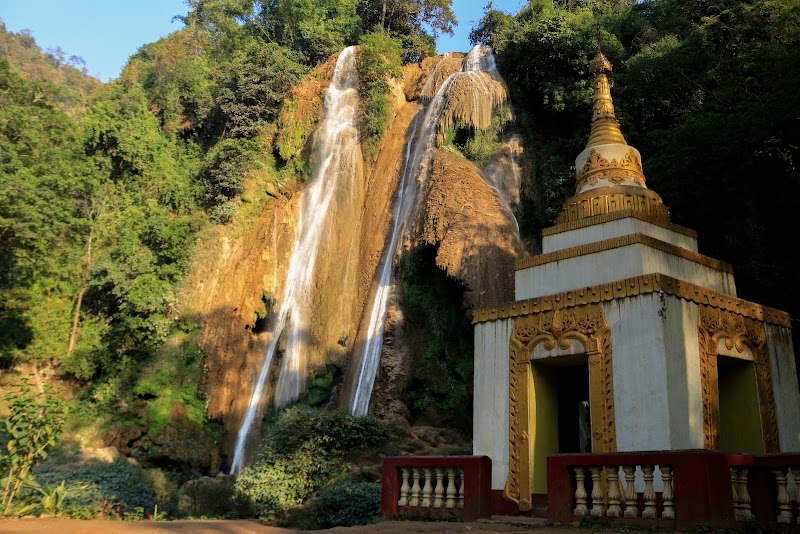
Exploring the Bagan Archaeological Zone Festival: Adventure Amidst Ancient Wonders
Experience the Bagan Archaeological Zone Festival, where adventure meets ancient history amid thousands of temples. This immersive cultural event invites explorers to traverse temple trails and vibrant festivities, offering practical tips to navigate the dusty paths and sacred sites with ease.
Hydrate Constantly
Carry at least 2 liters of water per day due to high daytime temperatures and dry conditions in the festival area.
Wear Suitable Footwear
Choose shoes with good grip and breathability to handle a mix of dusty trails, sand, and temple steps safely.
Start Early
Begin excursions at dawn to avoid midday heat and catch the festival’s most atmospheric lighting conditions.
Respect Heritage Sites
Follow local guidelines and avoid climbing restricted or fragile structures to protect Bagan’s historic integrity.
Exploring the Bagan Archaeological Zone Festival: Adventure Amidst Ancient Wonders
The Bagan Archaeological Zone Festival offers a rare chance to experience one of Myanmar's greatest cultural landscapes in full vibrancy and motion. Taking place over several days in the Mandalay Region, this annual event blends history, spirituality, and lively local traditions against the backdrop of thousands of ancient pagodas and temples. Far from just a tourist spectacle, the festival invites visitors into a dynamic environment where adventure meets heritage.
Set in the vast Bagan plains, the festival routes range from leisurely temple walks to more strenuous hikes that thread between centuries-old brick stupas, narrow forest trails, and occasional stretches of arid land. Expect to cover distances from 5 to 12 kilometers depending on the day’s schedule, with elevation gains usually mild but punctuated by some steep temple steps. The terrain alternates between dusty roads, shaded grove patches, and mild rocky outcrops where panoramic views unveil the sprawling archaeological zone and the Irrawaddy River daring to shimmer in the distance.
The festival’s pulse beats strongest at dawn and dusk, when the light filters warmly across the spires and lantern-lit processions paint the night air. For hikers and explorers, these hours are the safest and most captivating time for movement and photography, as the heat retreats and the landscape takes on a fierce yet mellow character.
To prepare practically, hydration is critical — bring at least 2 liters of water during excursions as Myanmar’s dry season can push temperatures above 35°C (95°F). Footwear should be sturdy but breathable, given the mix of gravel paths and sandy temple steps, while sun protection remains essential, including hats and light long-sleeve layers. Starting early helps avoid the midday sun and gives more time to absorb the festival’s many spiritual events without rush.
While navigating the festival routes, remain mindful that the natural environment and ancient structures are fiercely resilient but sensitive. Respect restricted zones and avoid climbing unsanctioned areas on fragile stupas. The festival is not only a cultural gathering but a call to engage with Myanmar’s living history respectfully. Listening to local guides provides invaluable insight into ancient rituals revived and preserved.
The Bagan Archaeological Zone Festival is an adventure that balances the thrill of exploration with the grounding presence of historical legacy. No dramatic conquests here—only a real chance to move through a landscape fiercely itself, alive beneath sun and sky, and shared by those drawn to uncover its layers, step by step.
Nearby Trips
All Adventures
Boat Charters
Water Activities
Adventures near Bagan, Mandalay Region
Discover the unique and memorable adventures that make Bagan, Mandalay Region special.
Frequently Asked Questions
What is unique about the Bagan Archaeological Zone Festival compared to other festivals?
This festival uniquely combines active exploration of ancient temple grounds with traditional cultural performances, market fairs, and religious ceremonies, all set in a sprawling UNESCO World Heritage site.
Are there any lesser-known viewpoints worth visiting during the festival?
Yes. Beyond the popular Shwesandaw and Pyathada pagodas, try the less frequented Mingalazedi Temple at sunset for quieter panoramic views with fewer crowds.
What wildlife might I encounter in the Bagan area during the festival?
Watch for local bird species such as the Asian koel and kingfishers near river edges, and timely sightings of butterflies flitting among temple flora in forested patches.
How strenuous is the walking involved in the festival activities?
Walking ranges from easy temple visits to moderate hikes between sites, including climbing temple stairs that require basic fitness but no advanced technical skill.
Are there environmental concerns visitors should be aware of during the festival?
Over-tourism puts pressure on archaeological structures and local resources. Stick to marked paths, avoid littering, and support eco-friendly initiatives promoted during the festival.
Is it possible to hire a local guide during the festival?
Yes, hiring a knowledgeable guide is highly recommended to better understand cultural nuances, historical contexts, and to navigate less obvious trails safely.
Recommended Gear
Lightweight Hiking Shoes
Provide traction and comfort on mixed surfaces including dusty paths and temple steps.
Sun Protection (hat, sunscreen, sunglasses)
Crucial for preventing sunburn during long daylight hours in open areas.
Reusable Water Bottle
Keeps you hydrated without excessive plastic waste in an eco-sensitive zone.
Lightweight Rain Jacket
Useful during sudden rain showers common from June through October.
Local Insights
Hidden Gems
- "Cellar Temple’s frescoes rarely seen by day visitors"
- "Local craft markets near Nyaung U with handwoven textiles"
Wildlife
- "Asian koel"
- "Indigo bunting"
- "Common kingfisher"
History
"Bagan was the capital of the Pagan Kingdom between the 9th and 13th centuries, home to over 2,000 temples that paint the landscape with religious devotion and architectural innovation."
